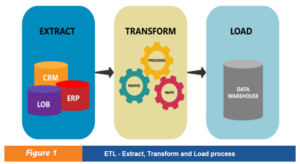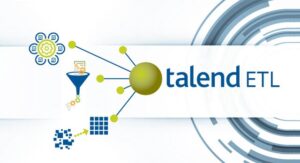
Best Solutions & Tools For Data Migration
Data processing, integration and migration can be a bit overwhelming because data never sleeps; data could come in from myriad sources into the data lake, from one repository to another or from one warehouse to another. This is where data migration comes in.
Data migration is the process of moving data from one system to another, and though it seems an innocent and simple plan, there are a lot of challenges involved because the data has to be intact irrespective of the migration process. There could be changes in storage, application and database. Henceforth, there must be an excellent solution for data migration or else, the entire process will go to waste, eating up budget and other resources.
Data migration process
Image source: https://datawarehouseinfo.com/etl-vs-elt-transform-first-or-transform-later/
The process of data migration is also known as ETL or Extract-Transform-Load process. The data extracted from various sources will have to be transformed and loaded in the destination location. There are different variations to data migration. Either the entire system will have to be overhauled, or there will be a system upgrade or merging of data from another source. This happens with data acquisition or when you have to deploy another system with existing applications. So while choosing the best data migration strategy, it would be good to analyze the different tools involved in it.
They are categorized into:
- Self-script tools
- On-premise tools
- Cloud-based tools
Self-script tools
Understandably, self-script tools is a do-it-yourself approach where coding skills are mandatory, scalability is required and your engineers will have to be involved in scripting the codes. Hence, it is more suitable for small projects and also when you have relatively small amounts of data. It is also advisable to use self-scripted tools if the specific source or target location is not supported by other tools/software’s. However, the engineers in charge of the migration project must ensure that codes are well-documented or it would be difficult to make a change later.
On-premise tools
When moving to the cloud is not an option, companies can choose on-premise tools. This is mostly opted during mergers and acquisitions or when the data has to be moved within an enterprise network. You can choose the on-premises option, when companies need very strict security policy, require complete control of the migration process and every single data that’s in there, but do not want your data on the cloud. The data sources and destinations are at a single site and you don’t plan to scale any time soon. This option is also perfect for companies choosing CAPE (Capital Expenditures) model over the OPEX (Operating expenses) model.
Cloud-based tools
An ideal solution for automated data migration from cloud to cloud. The biggest advantage of this type of solution is that the tools are highly flexible, and can handle different types of data. You can even choose the pay as you go model, so you can pay for only the resources that you used. So when you want to scale and go dynamic, choosing these tools would be the best. In this model, companies choose the OPEX (Operating expenses) model over the CAPE (Capital Expenditures) model.
Strategies involved in Data Migration
You have two options in data migration, one is the Big Bang migration, and other is the Phased or Trickle method.
- Big Bang migration
As the name suggests, Big Bang migration is when you migrate all the data in full transfer operation. The data goes through ETL processing and will be transferred onto a new database/warehouse/storage. This could be an intense operation and yes, risks could arise, in the form of compromised implementation.
Whenever you are planning a data migration, backup the data so you can be on the safe side if there is a problem with implementation. Have a plan and stick to it to be prepared for the reality.
- Trickle/Phased migration
Image source: https://medium.com/edureka/talend-etl-tool-d08b497c33f
Trickle migration happens in phases, and eliminates downtime or interruptions, and can be likened to the agile approach. The migration process is broken down into smaller sub-migrations. The data will be run parallel in the old and new systems and data transfer happens in small increments.
If you are planning data migration, then you will have to draw out the technical architecture of whichever solution you are choosing, detailing the processes involved in the same. There are a number of softwares for data migration, for example, Talend, Asters Centerprise, Informatica Power Center.
It is also important to look at the security plans, because that should be threaded into the solution to ensure there aren’t any data leaks. This should be done under the guidance of an expert migration partner who would help you run through the process in a safe and foolproof manner. We can help you through the entire data migration phases of Planning, Backup of data, Execution, Post-migration audit, Data profiling, Migration design and Testing.





